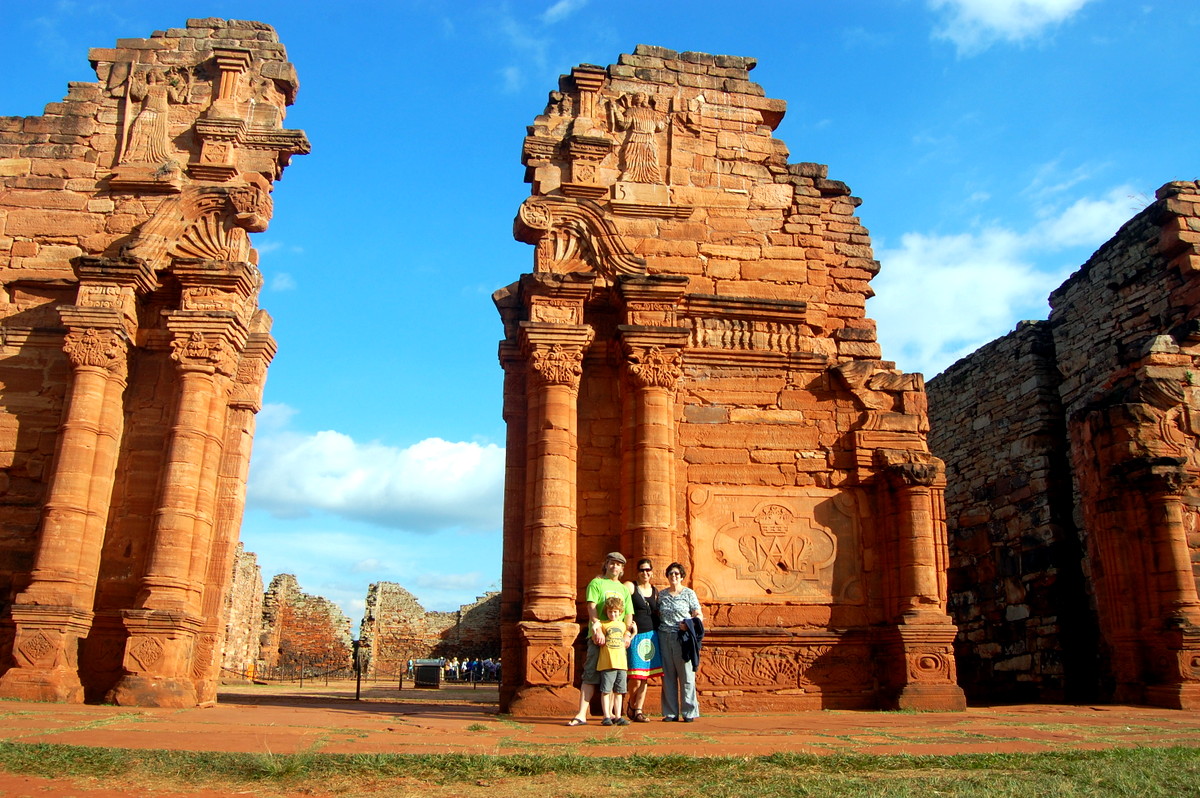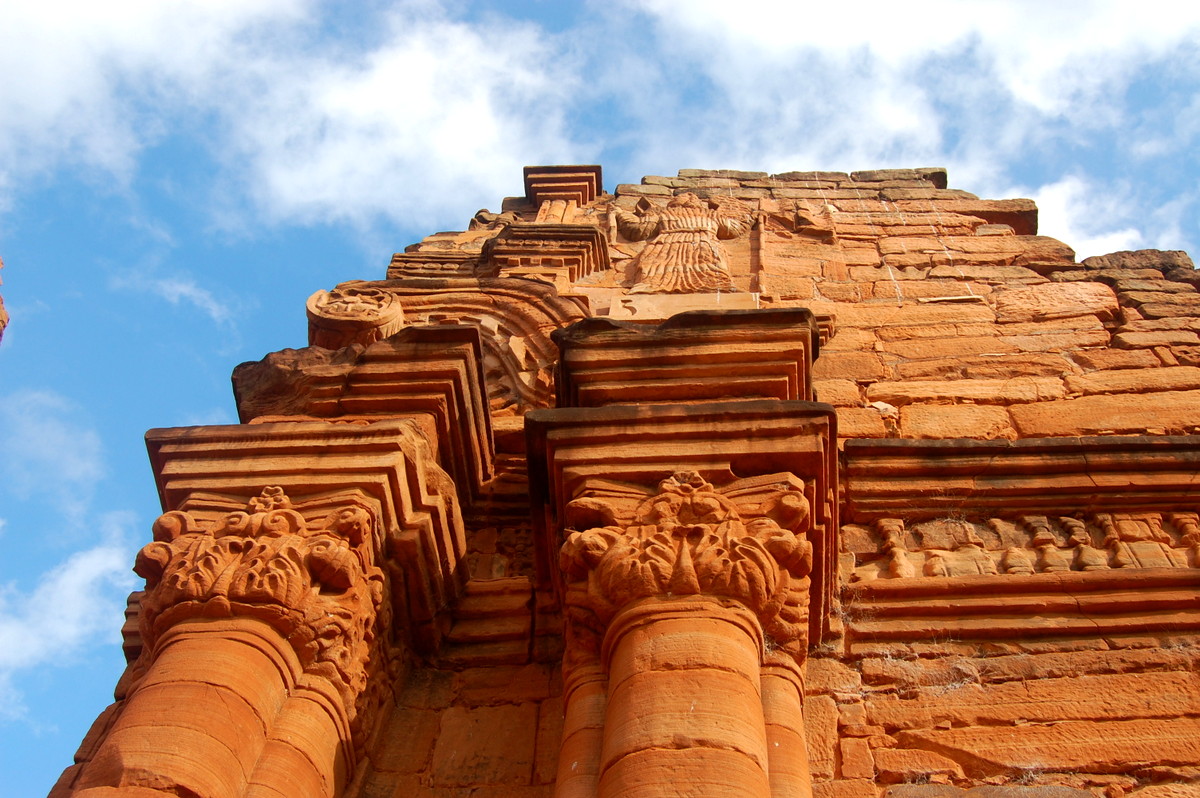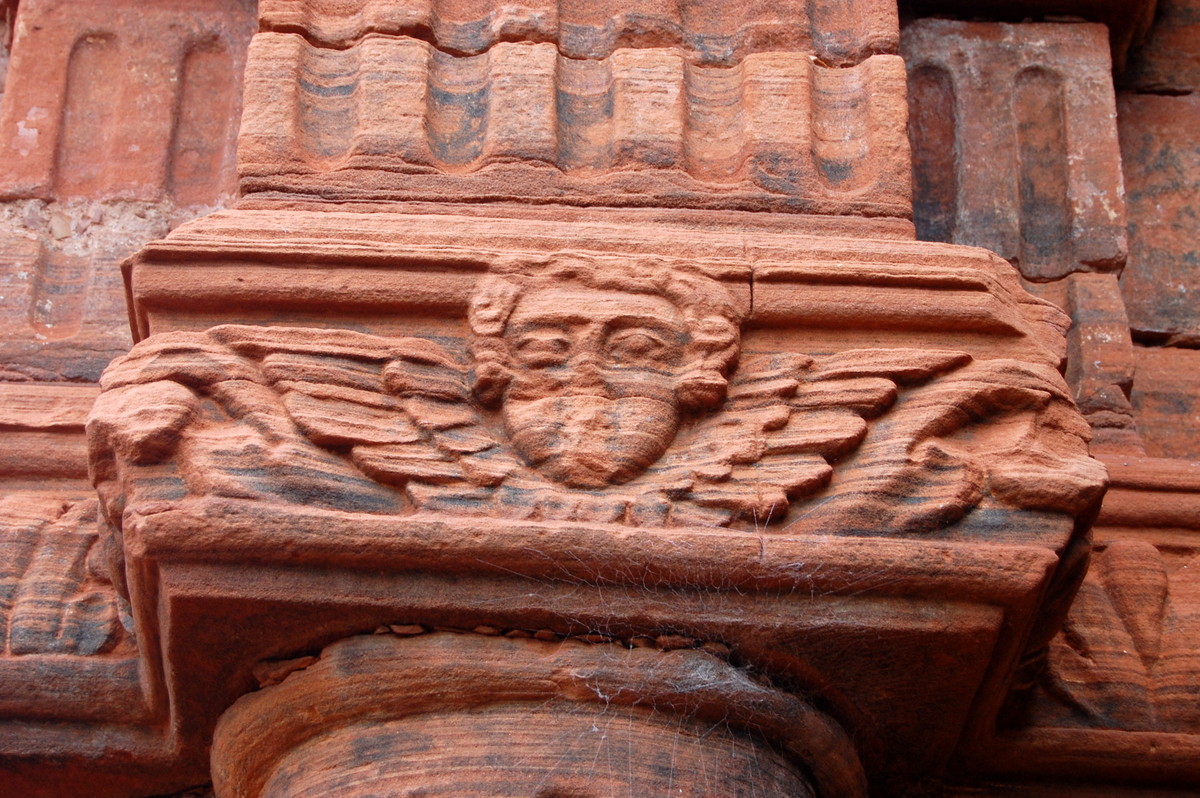San Ignacio Mini
Visiting the ruins of Jesuit Missions is the attraction in this neck of the woods. WOO-HOO!
It hardly seemed something to get excited about, but merely a good way to break up a long drive. Still, the more I read, the more interesting it became.
We’ve seen our share of the effects of Spanish and Portuguese colonization. First, wiping out indigenous populations by an estimated 80%, mostly with their infectious diseases, but also with their more powerful weapons and horses.
There was also the violent attempts to convert natives to Catholicism, and later slavery and the exploitation of their natural resources.
The Jesuits landed in the area of Northern Argentina, Paraguay and Brazil and set up 30 missions– or what they call reducciones. While the purpose was still to evangelize the natives in the very remote jungle areas, the process was much different than other areas. Only 2 priests lived in each mission, serving up to 3,000 locals. They first made contact with the chiefs by using music and song, and learning the Guarani language. When the chief was converted, his whole tribe came into the settlement. Chiefs still maintained their ruling power.
Each family was provided a house, garden space as well as food distributed equally throughout the community, education (for some boys), and protection from Bandeirante slave traders. The missions also had a hospital, warehouses and a home for widows (and abandoned wives) and orphans.
They were not expected to change their language, or many of their beliefs (although they priests did wipe out polygamy and cannibalism). The Guarani embraced music and art in this period, and there are still Guarani here to this day (the only natives in Argentina) and they sell the handicrafts their people learned from the Jesuits.
The missions were of course built around a big church, which everyone attended every morning before they were sent off for their work. The architecture is modeled after the European churches of the time, and very baroque.
The missions were very autonomous, profitable and even considered ‘utopian’. I admit that this system seemed to have some benefits, but I doubt that it was all rosy for these nomadic people.
They survived attacks from slave traders and other natives, but the Jesuits were eventually kicked out of the country in about 1760 because the Spanish government viewed them as a threat. The missions died out quickly after this,with some Guarani becoming victims of the slave-trade and others just leaving.
The entire complex we visited, San Ignacio Mini, was much larger than I’d imagined and very impressive. Especially when you consider that the jungle had taken over the entire area nearly 100 years before it was rediscovered.






cool